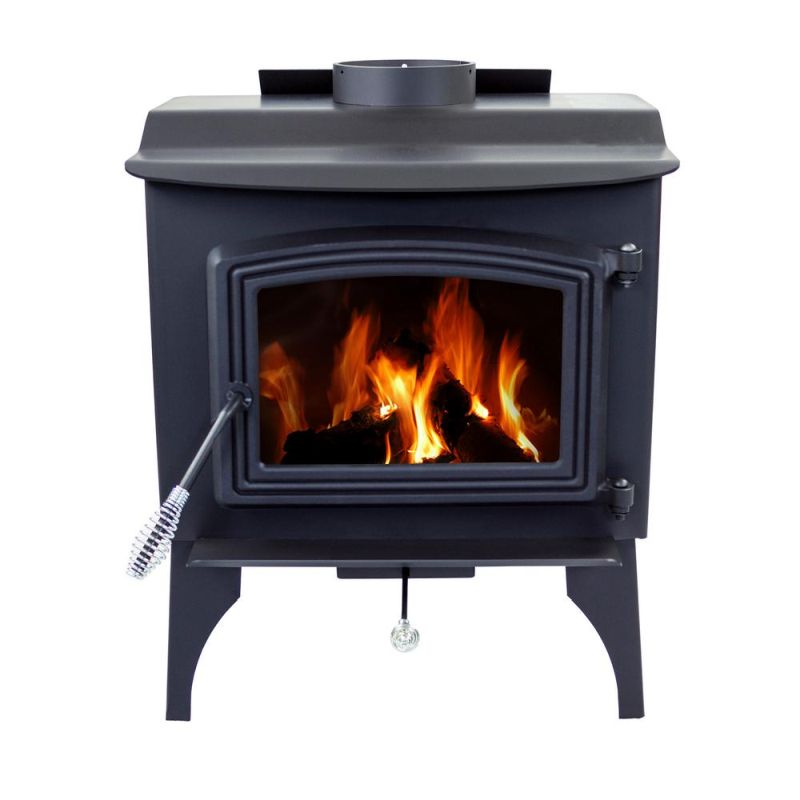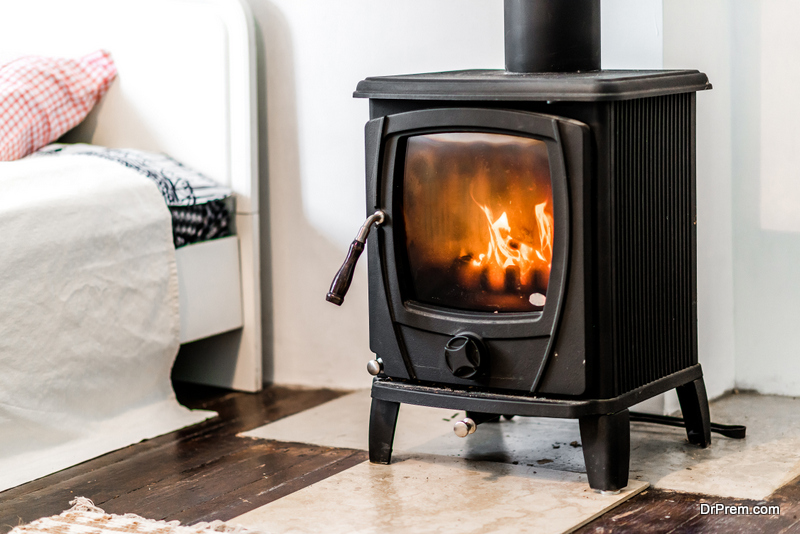You’re probably aware of the various energy-efficient ways to warm your home in winter. Here are four tips you probably haven’t heard:
- Get a high-efficiency pellet stove
If you’ve never had a wood burning pellet stove, you’re missing out on a seriously amazing (and cheap) source of heat. These stoves have the power to heat up a room and maintain warmth even when that room has poor insulation and a significant draft.
Just add wood pellets to the hopper and push a button to start the fire. You can control the burning rate, the heat output, fans, and the draft. Manual stoves take more effort to start, but they give you a little more control.
Whether your pellet stove has a manual or automatic ignition, they’re easier to use than a standard wood stove because you don’t need to haul wood into the house and work hard to get the fire started. You will need to store bags of pellets that normally weigh about 40 pounds, but it’s easier to retrieve a bag of pellets from another room than it is to gather wood from outside in the cold.
A wood burning pellet stove is ideal for smaller spaces, but can heat up bigger spaces with a little more effort, which brings up the next tip.
- Use concrete or brick to maximize heat retention
When using a wood stove or pellet stove for heat, you might find it’s not enough, especially if you have high ceilings. If you find yourself supplementing with central heating, try something different.
Build up a wall of concrete or brick around the sides of your wood burning stove. When the heat radiates from your stove, rather than allowing the heat to escape up through the ceiling, it will be held in the brick or concrete for a long period of time.
If you really want to get your hands dirty with a project, you can use dryer duct to suck heat into the basement to radiate even more heat up from the floors. This is a good way to keep drafty spaces warm, but if you’ve got good insulation, you won’t need it.
If you don’t have a wood stove, you can still make a radiant space heater from a pile of bricks and an alcohol stove. This option is great for rooms that tend to stay cooler than others.
- Use uncut rounds for slow-burning
 In a wood stove, you can burn uncut rounds as well as split wood. In most cases, you’ll need to use a couple of pieces of split wood to get a fire going, but that’s all. Burning rounds is the secret to creating a slow-burning fire that will last all night long.
In a wood stove, you can burn uncut rounds as well as split wood. In most cases, you’ll need to use a couple of pieces of split wood to get a fire going, but that’s all. Burning rounds is the secret to creating a slow-burning fire that will last all night long.
Sometimes a raging fire produces too much heat in small spaces, and you need to open the door (even in winter) to let some of the heat out.
There’s no need to split all of your wood. Using rounds, you’ll get a more consistent temperature in your home, and you’ll use less wood overall.
- Stop maintaining your thermostat at a specific temperature
Most people believe they’ll save money and energy by setting their thermostat to 68 degrees. This concept is so common that nobody seems to question it. However, the reason people save money when they keep their thermostat set to 68 degrees has little to do with the temperature.
For most people, setting their thermostat to 68 degrees seems to create a comfortable temperature in the main rooms of the house. Keeping the thermostat set to 68 degrees prevents people from cranking up the heat so high that the heater runs longer than needed, especially when nobody’s home to shut it off when they suddenly realize they’re sweating.
The 68-degree concept might work for some people, but there are more factors to consider than the thermostat’s set temperature. For instance, a standard thermostat only knows what the temperature is around the actual thermostat. It doesn’t know if it’s warmer or colder in rooms throughout the house. Most homes have rooms that are naturally warmer or cooler than others.
If you spend most of your days in a room that tends to be warmer, then setting your thermostat to 68 degrees might not make sense. You might want to set it to 60 or 65 degrees instead. Or, turn it off until you actually need the heat.
PELLET STOVE CLEANING TOOLS AND SUPPLIES
Your setup may require different wood pellet stove cleaning tools, so you’ll learn what works best for you after a few maintenance sessions. If you aren’t sure what you need to clean a pellet stove, start with these supplies:
- Old sheets, blankets or other items
- A five-gallon bucket
- Garbage bags
- A screwdriver
- A flashlight
- Flexible vent pipe brushes
- Other cleaning brushes
- Rope
- High-temperature sealant
- A ladder
- Protective gloves and a face mask
- Pellet stove glass cleaner
Article Submitted By Community Writer



